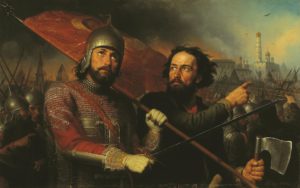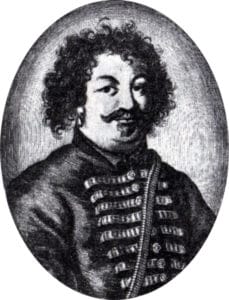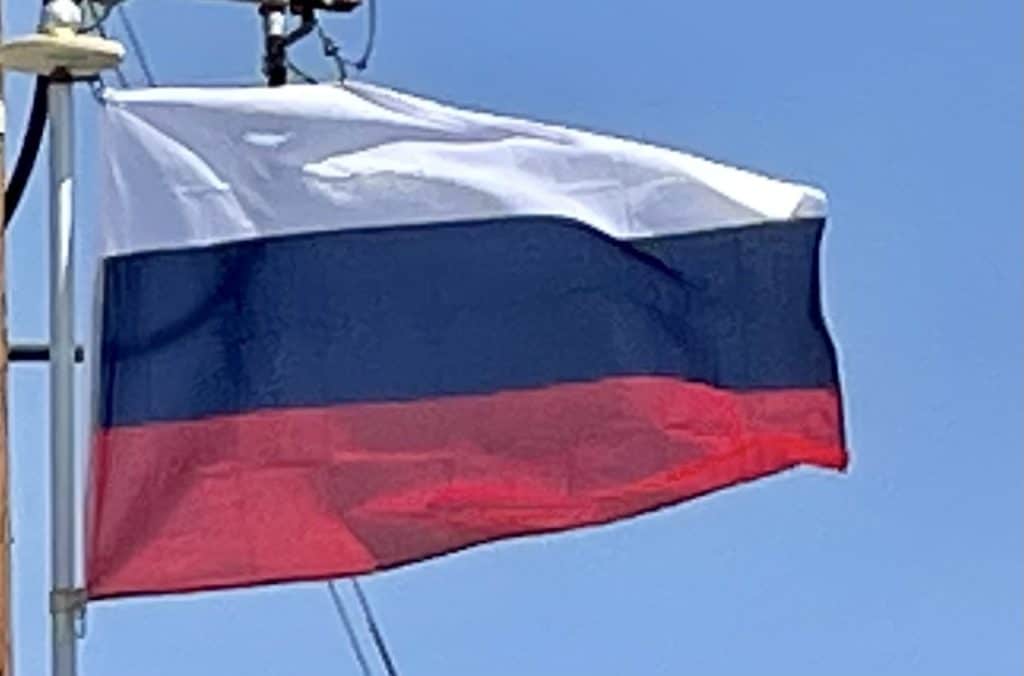However, the Tsardom was weakened by the long and unsuccessful Livonian War against the coalition of Poland, Lithuania, and Sweden for access to the Baltic coast and sea trade. At the same time, the Tatars of the Crimean Khanate, the only remaining successor to the Golden Horde, continued to raid Southern Russia. In an effort to restore the Volga khanates, Crimeans and their Ottoman allies invaded central Russia and were even able to burn down parts of Moscow in 1571. But in the next year the large invading army was thoroughly defeated by Russians in the Battle of Molodi, forever eliminating the threat of an Ottoman–Crimean expansion into Russia. The slave raids of Crimeans, however, did not cease until the late 17th century though the construction of new fortification lines across Southern Russia, such as the Great Abatis Line, constantly narrowed the area accessible to incursions.
The death of Ivan’s sons marked the end of the ancient Rurik Dynasty in 1598, and in combination with the famine of 1601–03, led to a civil war, the rule of pretenders, and foreign intervention during the Time of Troubles in the early 17th century. The Polish–Lithuanian Commonwealth occupied parts of Russia, including Moscow. In 1612, the Poles were forced to retreat by the Russian volunteer corps, led by two national heroes, merchant Kuzma Minin and Prince Dmitry Pozharsky. The Romanov Dynasty acceded to the throne in 1613 by the decision of Zemsky Sobor, and the country started its gradual recovery from the crisis.

Russia continued its territorial growth through the 17th century, which was the age of Cossacks. In 1648, the peasants of Ukraine joined the Zaporozhian Cossacks in rebellion against Poland-Lithuania during the Khmelnytsky Uprising in reaction to the social and religious oppression they had been suffering under Polish rule. In 1654, the Ukrainian leader, Bohdan Khmelnytsky, offered to place Ukraine under the protection of the Russian Tsar, Aleksey I. Aleksey’s acceptance of this offer led to another Russo-Polish War. Finally, Ukraine was split along the Dnieper River, leaving the western part, right-bank Ukraine, under Polish rule and the eastern part (Left-bank Ukraine and Kiev) under Russian rule. Later, in 1670–71, the Don Cossacks led by Stenka Razin initiated a major uprising in the Volga Region, but the Tsar’s troops were successful in defeating the rebels.

In the east, the rapid Russian exploration and colonization of the huge territories of Siberia was led mostly by Cossacks hunting for valuable furs and ivory. Russian explorers pushed eastward primarily along the Siberian River Routes, and by the mid-17th century, there were Russian settlements in Eastern Siberia, on the Chukchi Peninsula, along the Amur River, and on the Pacific coast. In 1648, Fedot Popov and Semyon Dezhnyov, two Russian explorers, discovered the Bering Strait; which led to the Russians becoming the first Europeans to sail to North America.
Imperial Russia:
Under Peter the Great, Russia was proclaimed an Empire in 1721, and became recognized as a global power. Ruling from 1682 to 1725, Peter defeated Sweden in the Great Northern War, forcing it to cede West Karelia and Ingria (two regions lost by Russia in the Time of Troubles), as well as Estland and Livland, securing Russia’s access to the sea and sea trade. On the Baltic Sea, Peter founded a new capital named Saint Petersburg. Later, his reforms brought considerable Western European cultural influences to Russia.
